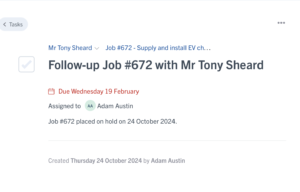How more detailed quotes lead to better projects
Appearances really do matter. As much as we may protest to the contrary, we all make hundreds of value judgements and decisions each day based entirely on the way things look. It’s hard wired into our psychology as an innate protection system. If something doesn’t look like we expect it to, it sets off alarm bells. This explains why creating detailed, professional looking quotes can be instrumental in getting more work.
Just imagine the situation: you ask two separate electricians for a quote to rewire your house. One quote comes back neatly presented, with a company letterhead, a detailed breakdown of costing, materials, labour, taxes and contingencies. The other is a number scribbled on a crumpled bit of paper. Your decision will be affected as much (if not more) by the value judgments you make of these differing quotes as the actual prices quoted.
After all, when it comes to a detailed, skilful and technical job like wiring, you’ll probably go for the neater, more organised and better attention to detail option. It just makes sense.
How to increase the detail in your quotes
So, it pays to put more detail in the quote. You need to demonstrate that you haven’t just plucked a number out of thin air. Create a clear and detailed breakdown of how you arrived at your price. Include the cost of materials (which can be estimates but are better if they are accurate as these can be checked), labour costs, VAT and other taxes, plus any other expenditures. If you can’t account for it, it shouldn’t be on the quote.
Why this works
Having more detail on your quote increases the conversion rate because it proves to the client that the price is accurate. The actual numbers don’t matter so much. Again, psychological studies show that people don’t mind paying more if they are confident they will get a good service. Your accurate and detailed quote demonstrates that you are taking the job seriously in a way a random number scribbled down does not. Clients are more likely to trust you and use your services if they feel valued and informed from the outset.
How to make sure it’s working
This is the tricky bit, as it’s hard to test out whether you’re quotes are working without risking losing work. It’s not like you can deliberately send out bad quotes just to prove your detailed ones are more successful.
However, you can ask for feedback from clients. Once you have started the job or when you’re finishing up, ask if the information on the quote was clear or if there was anything they didn’t understand. Most clients will be happy to help.
You can also use your friends, families and colleagues as sounding boards. Present them with sample quotes, and even borrow some from other tradespeople to see how yours compares. The more feedback and the wider the sample group, the better. Through a process of fine-tuning, you can improve your quotes and win more work. However, it’s important to remember that people are all different and that sometimes, you just aren’t the right person for the job. That’s how it goes, move on to the next project and learn from it.

